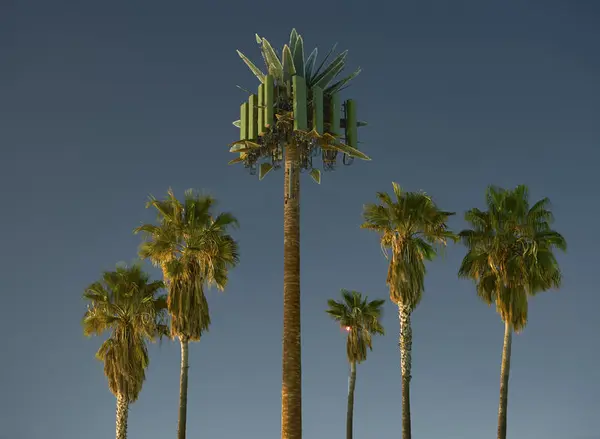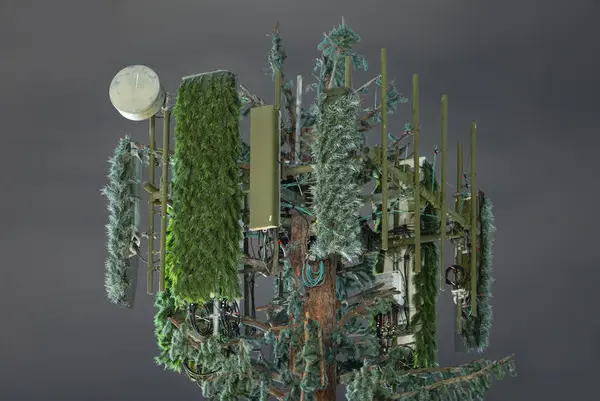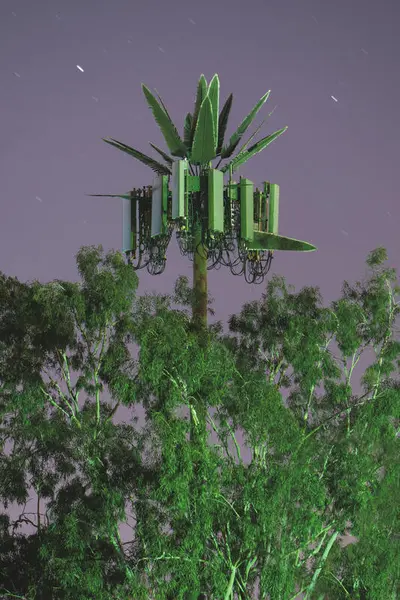- 1/1
© Kaya & Blank, from the series Second Nature, 2022
These peculiar artifacts of the digital age serve as a thought-provoking metaphor for the intersections of democracy, nature, and artificial intelligence. They stand as silent sentinels, bridging the gap between the natural world and the realm of AI, raising questions about the balance between our technological progress and the preservation of our natural environment.
- 1/1
© Kaya & Blank, from the series Second Nature, 2022
The cell tower trees can either be understood as an evolutionary mutation or a cancerous invasion - either way they deeply relate to the concept of DNA.
- 1/1
© Kaya & Blank, from the series Second Nature, 2022
Read Kaya & Blank's project description here
Second Nature, 2022
With the uprise of mobile devices, the infrastructural needs of the telecommunication industry have exploded, and since the 1980s, cell towers have started to fill the planet. The scenery changed dramatically when an antenna was transformed into an artificial pine tree for the first time in 1992. Since then, this kind of camouflage has evolved into a global phenomenon that raises fundamental questions about the relationship between humans and nature. In the course of our research, we found more than a thousand cell tower trees in Southern California. While they can be found all over the world, their numbers are particularly high in this area due to city legislation and urban design.
These peculiar artifacts of the digital age serve as a thought-provoking metaphor for the intersections of democracy, nature, and artificial intelligence. Amidst the ever-expanding reach of technology and its implications for democracy, these disguised cell towers symbolize the subtle ways in which the digital world intertwines with our physical surroundings. They stand as silent sentinels, bridging the gap between the natural world and the realm of AI, raising questions about the balance between our technological progress and the preservation of our natural environment.
As we delve deeper into the series, we invite viewers to contemplate the delicate dance between the digital and the organic, where the camouflage of these towers mirrors the complexities of our relationship with technology. By juxtaposing these strange, tree-like structures with the lush beauty of nature, we aim to provoke a dialogue about the choices we make in shaping our digital landscape and their consequences for the future of democracy and the world around us. The cell tower trees can either be understood as an evolutionary mutation or a cancerous invasion - either way they deeply relate to the concept of DNA.


